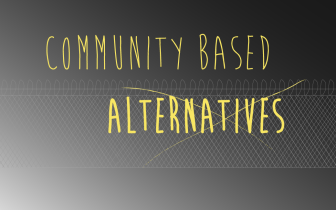
Katy McCarthy / JJIE
This story is part of a series of articles exploring Community-Based Alternatives. Read more from the series here: http://bit.ly/15geZEL
For low-level juvenile offenders, advocates and analysts say evening reporting centers could be excellent alternatives to detention.
»Click here to read the main bar story on Mrs. Carolyn's Cottage
Community-based alternatives like My Friend’s House Family and Children’s Services Evening Diversion Program in the metro-Nashville area take a different approach to juvenile offender reform. Instead of sending kids to detention and confinement facilities, young people in jurisdictions employing such programs are enrolled in programs designed to deter future offenses via education and social skills training.
Evening diversion programs, also called evening reporting centers or day reporting centers, are usually designed to keep at-risk young people off the streets during after-school hours. In some jurisdictions, the courts themselves operate the programs, and in others, young people are court-appointed to off-site services. In the case of My Friend’s House Evening Diversion Program, children involved in other systems -- such as the Department of Children’s Services -- are also eligible for the intervention.
Shay Bilchik, founder and director of the Center for Juvenile Justice Reform at the Georgetown University Public Policy Institute, said that low-to-moderate risk offenders could be well-served by evening reporting centers.
“Over time, we’ve developed more of these evening reporting centers [and] day reporting centers, kind-of wraparound approaches that we learned a lot about from systems of care,” Bilchik said.
Evening reporting centers, he said, are common detention alternatives throughout many communities in the United States. “The idea of day reporting centers, some places that youth may go to after school, and evening reporting centers, to make sure the evening hours are also filled with productive pro-social activity,” Bilchik said, “these are not uncommon tools.”
If one was to ask 50 teen probation officers whether their counties were using evening reporting center programs, he said a majority of them would say yes. “And if they’re not,” Bilchik said, “it’s often a resource issue rather than ‘I made a choice that these aren’t a productive alternative for me to use.’”
One of the strongest aspects of such programming, he said, is that they frequently zero-in on the roots of delinquent behavior, addressing issues like negative peer interaction, family problems and other pro-social bond deficits.
“What this tool allows us to do is say, ‘Look, if a kid is having trouble academically, and that’s a high criminogenic need for this youth, and this youth is beginning to associate with a negative peer group,” he said, “‘how can we use a day or evening reporting center, not just as a detention alternative … but to provide additional academic support, to engage them in some pro-social activities with a different peer group?’”
Evening reporting centers, he said, can be used as both juvenile detention alternatives and post-disposition tools to reduce recidivism.
“It provides a meaningful alternative to incarceration when public safety doesn’t require incarceration,” Bilchik said. “And then again, it’s also much cheaper and perhaps equally, if not more effective, if you’re targeted for the right child, with the right risk-level.”
Daniel Macallair, executive director of the Bay Area-based Center on Juvenile and Criminal Justice said that, initially, evening reporting centers in San Francisco had difficulties filling slots. Meanwhile, he said the evening reporting program in Santa Cruz -- about 70 miles to the south of San Francisco -- had one of the best county-operated systems of its kind in the nation.
“So much depends on a particular jurisdiction,” he said. “What’s their capacity for identifying the appropriate kid, and how do they utilize [the centers]?”
For any rehabilitative system to be effective, Macallair said that programming has to offer a wide range of services, which can be tailored to meet individual needs. “Too often, what happens -- and this can be true of day reporting centers, evening reporting centers or any other type of program,” he said, “a lot of times, the programs get sold on the idea that this is the end-all, and you get this program, and you’re solid.”
Macallair said that systems may err when they contract out to just one type of intervention service, however.
“Even with this idea of ‘evidence-based practice,’ we have to be careful,” he said. “Because it discourages systems from developing an array of interventions which will take you closer to the goal of rehabilitation than just any kind of one-dimensional approach.”
When used as part of an organized continuum of services, however, Macallair said evening reporting centers could be very beneficial for certain types of juvenile offenders.
“One of the rationales for the evening reporting was that there were a lot of kids who are out on the street at night, and don’t have anything to do, and when they don’t have anything constructive to do, they get into trouble,” he said. “If we provide options for them that require them to be there where they can be supervised, but also provide some recreation, maybe some counseling, maybe some additional tutorial services, that’s all good, too.”

